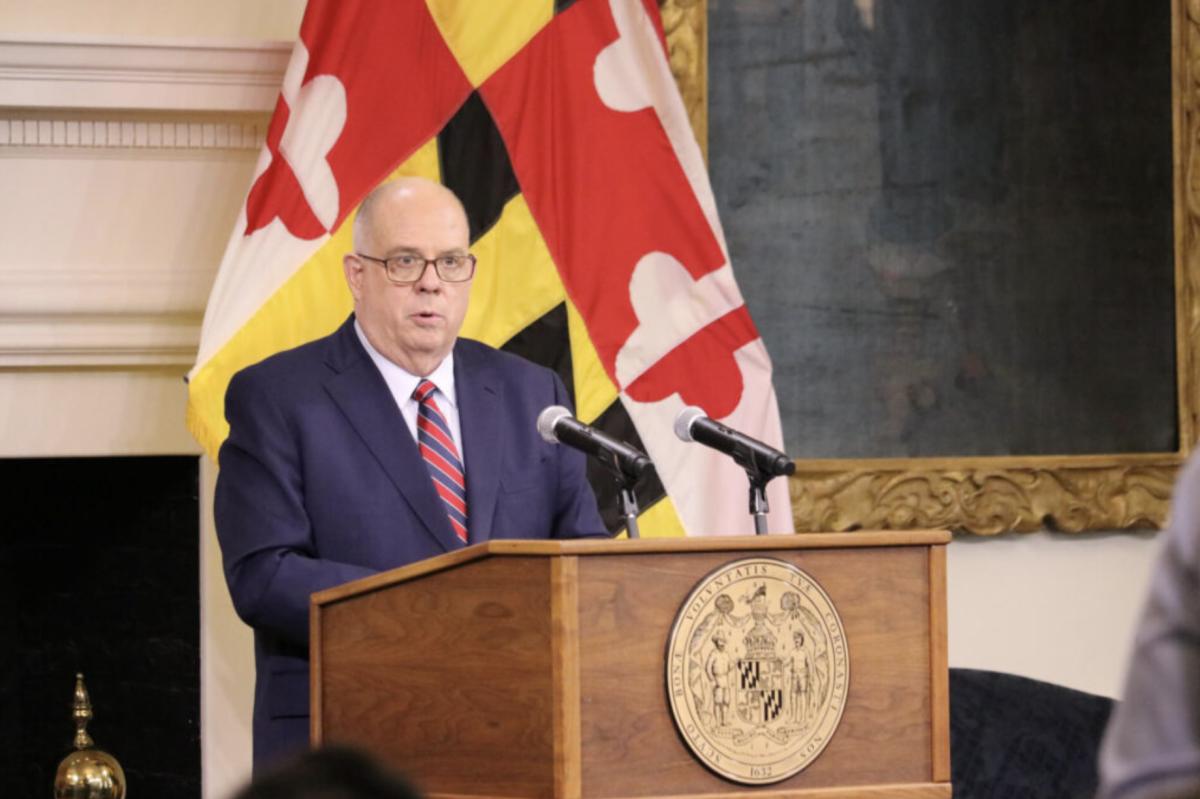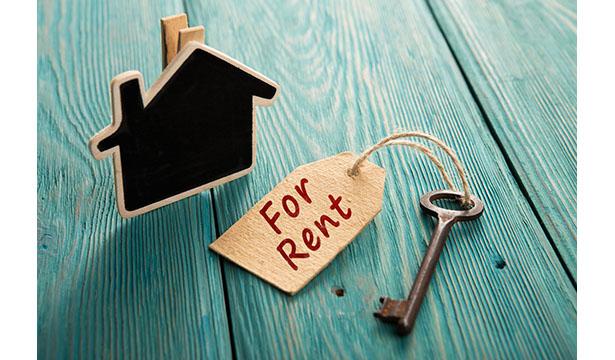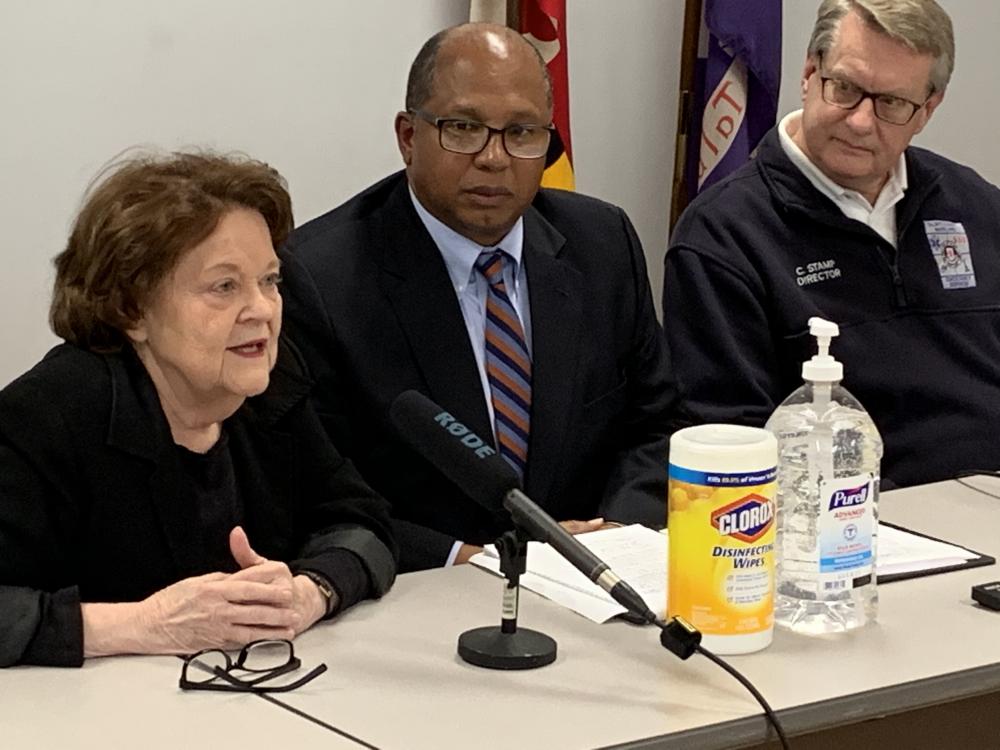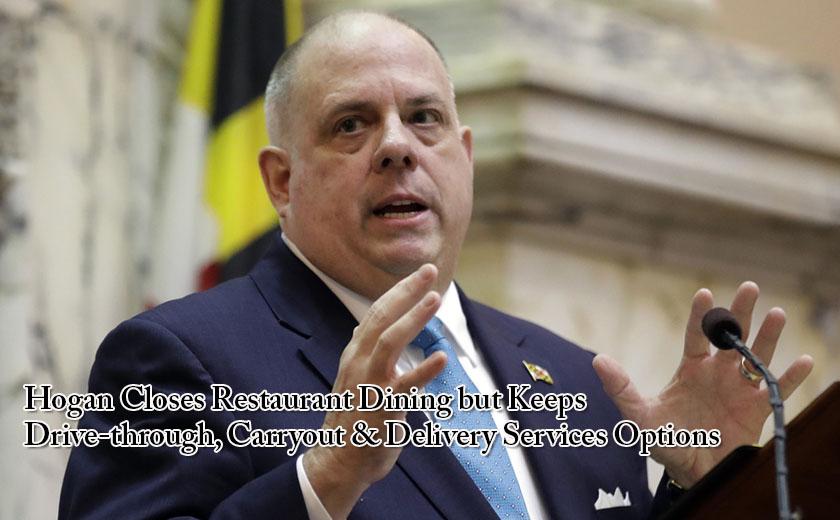Gov. Lawrence J. Hogan Jr. (R) proclaimed a 30-day state of emergency Tuesday morning, stating that Maryland will see the pandemic reach its worst points in January through early February.
“…[T]he truth is that the next four to six weeks will be the most challenging time of the entire pandemic,” Hogan said.
The Maryland Department of Health reported an additional 311 hospitalizations Tuesday morning, pushing the state to a new peak of 3,057 in total. Hogan said that state health officials project that “could reach more than 5,000” — more than 250% higher than the state’s previous peak of 1,952 hospitalized COVID patients.
Tuesday also saw nearly 14,500 confirmed cases and 48 deaths. The state’s positivity rate rests at 27.44%.
“Right now we’re experiencing the winter surge that we anticipated, together with the convergence of the delta variant, the flu season and the omicron variant which has spread like wildfire throughout the country and around the world,” Hogan said.
Under the proclamation Hogan has the ability to “take urgent, short-term actions to combat the current crisis,” he said.
Hogan also issued two executive orders Tuesday.
The first order gives Maryland Department of Health Secretary Dennis R. Schrader the authority to direct and expedite the transfer of patients between hospitals and create alternate care facilities, allows for interstate reciprocity to let health care workers licensed in nearby states to practice in Maryland, lets inactive practitioners provide care services without renewing their licenses and gives graduate nurses the greenlight to provide care in hospitals and other health care settings.
Hogan’s second order expands the state’s emergency medical workers by giving the executive director of the Maryland Institute for Emergency Medical Services Systems and the chairperson of the State Emergency Medical Services Board the authority to suspend portions of state code to allow more people to practice on the frontlines.
Additionally, the governor announced that he has deployed 1,000 members of the Maryland National Guard to aid local health officials in testing and transporting patients.
Access to testing has been front of mind for many Marylanders who have waited hours in lines after the holiday. The demand for testing portends increased case rates, and potentially hospitalizations.
According to Dr. Theodore Delbridge, the executive director of the Maryland Institute for Emergency Medical Services Systems, Tuesday’s hospitalization rate represents a 100% increase in the number of hospitalizations from Dec. 22 — only two weeks ago. He also noted that nine hospitals have begun operating under crisis standards of care, with three more on the verge of doing so.
“As of yesterday afternoon, more than 600 patients — people — were waiting in emergency departments for their turn to be admitted to a hospital bed,” Delbridge said.
He added that nearly every Maryland emergency department is requesting that EMS teams reroute patients to other hospitals to try to mitigate patient overflow.
“Of course, that’s not possible when every nearby emergency department is also requesting no new patients,” said Delbridge.
Hogan continued to push for vaccinations, adding that booster shots are now available to Maryland children aged 12 through 15 five months after they received their second dose.
The governor said that “nearly 75%” of people who tested positive and “nearly 84%” of those who died from COVID-related complications in 2021 were not fully vaccinated.
“The vaccines are safe and effective, and they’re keeping people out of the hospital and saving lives,” Hogan said.
While Hogan declared a state of emergency, he did not mandate statewide masking.
Hogan said that masking mandates can result in “the opposite effect.”
“I’m not sure the people that are refusing to wear masks are going to wear one anyway. We don’t have the ability to enforce it, so we’re just strongly encouraging people to wear the damn mask, but we don’t need a mandate to … force businesses to do that we’re encouraging them to do so,” he said.
Rather, the governor, who was scheduled to attend a call with the White House shortly after the news conference, said that he would be pushing the federal government to shorten the length of time between second doses of vaccines and boosters, increase the availability of monoclonal antibodies for therapeutic clinical treatment and to expedite the approval and distribution of at-home rapid tests and the newly FDA-approved Pfizer antiviral pills.
“All of the emergency actions that we’re taking today are to keep our hospitals from overflowing to keep our kids in school and to keep Maryland open for business and we will continue to take whatever actions are necessary in the very difficult days and weeks ahead,” Hogan said. “But we also need the federal government to take decisive action.”
By Hannah Gaskill





